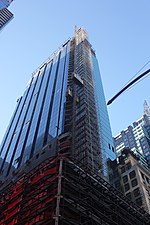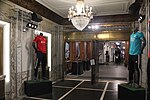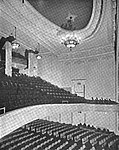20 Times Square

20 Times Square is a 39-story mixed-use development at 701 Seventh Avenue, on the northeast corner with West 47th Street at the northern end of Times Square, Manhattan, New York City. The development includes one of Ian Schrager's Edition Hotels, operated by Marriott, above a 6-floor 76,000 square feet (7,100 m2) retail component. It opened in February 2019. The building replaces the 1910 structure originally known as the Columbia Amusement Company Building, which had been home to a movie theater known variously as the Mayfair Theatre, the DeMille Theatre, and the Embassy 2-3-4 Theatre. On the upper floors, the Columbia Amusement Company Building had housed the famous Unique Recording Studios, which closed in 2004.
Excerpt from the Wikipedia article 20 Times Square (License: CC BY-SA 3.0, Authors, Images).20 Times Square
7th Avenue, New York Manhattan
Geographical coordinates (GPS) Address External links Nearby Places Show on map
Geographical coordinates (GPS)
| Latitude | Longitude |
|---|---|
| N 40.759305 ° | E -73.984163 ° |
Address
20 Times Square
7th Avenue 701
10036 New York, Manhattan
New York, United States
Open on Google Maps








